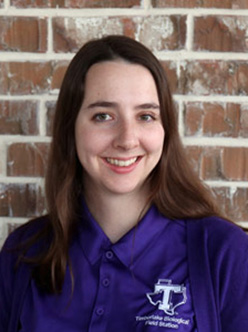
What is a Diatom?
I’m glad you asked! Diatoms are beautiful microscopic algae with golden-brown chloroplasts and a glass-like silica cell wall. If you go to a lake or river and notice brown “snot” on the rocks, those are diatoms working hard to provide oxygen and nutrients to that ecosystem. There is a huge diversity of diatoms living in pretty much any aquatic habitat, where they provide key roles to the food web and the ecosystem.
Due to their sturdy silica cell walls, diatoms also make excellent fossils, and provide a way to infer what past environments were like. I study this aspect of diatoms to understand how aquatic ecosystems have changed and continue to change in response to human activities, invasive species, and changes in the regional hydrologic cycle. If we understand how an aquatic ecosystem responded to changes in the past, we can make better management decisions in the present in order to protect sustainable water resource use into the future.
Student Research Opportunities
This lab may be a good fit for you if you are interested in studying paleoecology, aquatic ecology, freshwater environments, aquatic food webs, phycology, biodiversity and taxonomy, and/or human impacts on water resources.
Undergraduate and graduate students in my group gain hands-on experience in the field and in the lab. Field techniques include sampling live organisms from a variety of aquatic microhabitats, several sediment sampling methods, and in situ water chemistry (prepare to get wet!). In the lab, students are involved in preparing sediment samples for microfossil analysis, culturing live samples, preparing microscope slides, and using compound light and SEM microscopes for data collection and sample imaging. Students gain a good understanding of the classification and identification of diatoms, other algae, and zooplankton. Collaboration with other labs at Tarleton and other universities also provide opportunities to apply methods in genetic sequencing, paleontology, and so on.
Students will have the opportunity to present their research at local, regional, national, and/or international conferences. Students will also have the opportunity to publish their research findings in peer-reviewed articles.
Ongoing Projects
- Biodiversity and environmental optima of Colorado River diatoms at the Timberlake Biological Research Station
